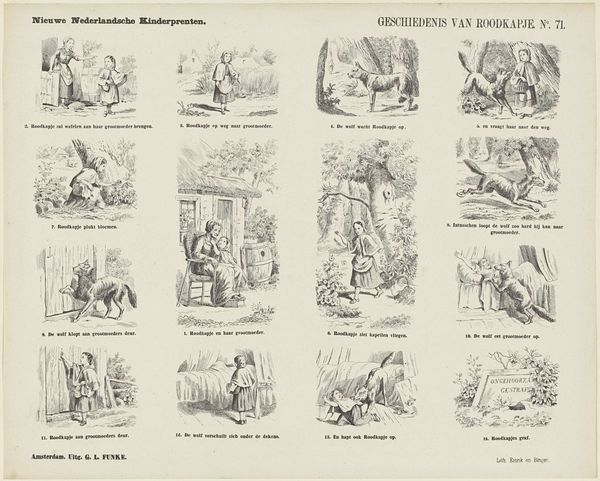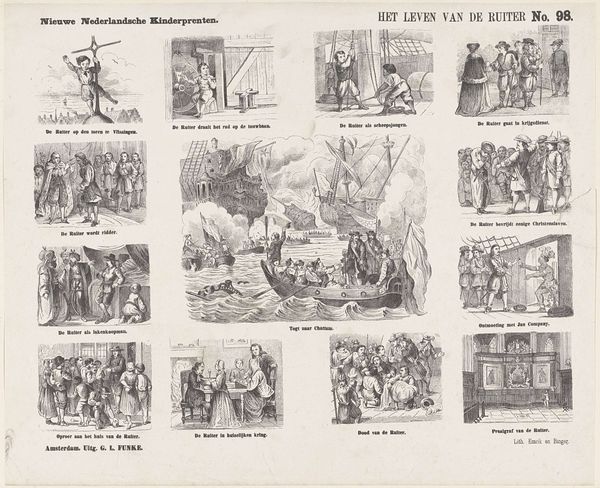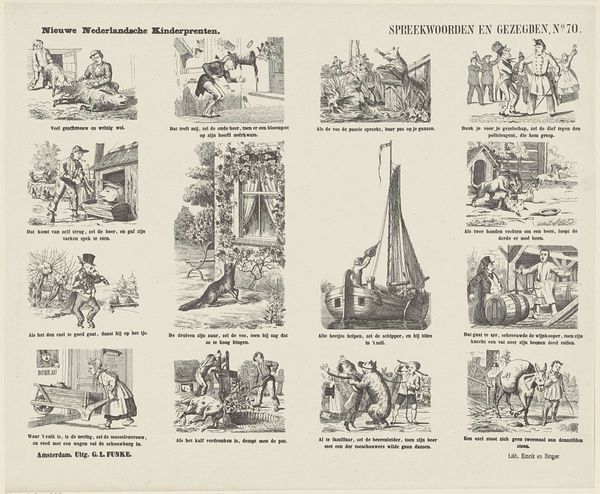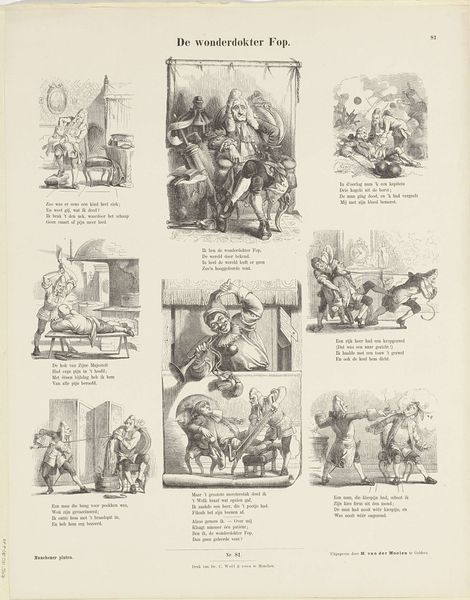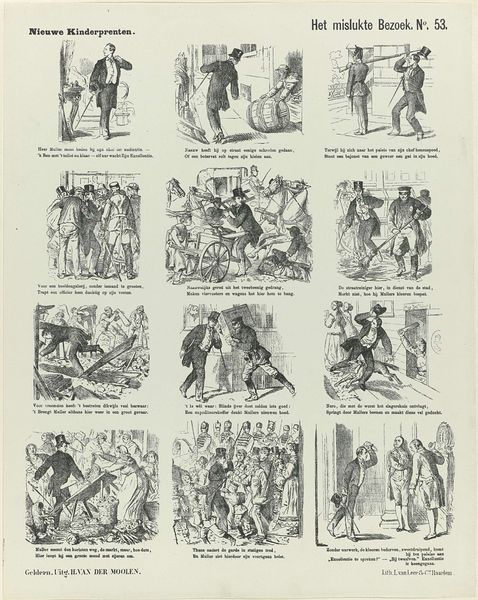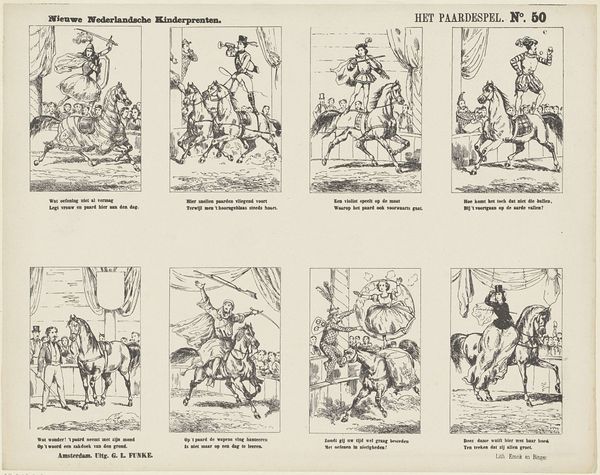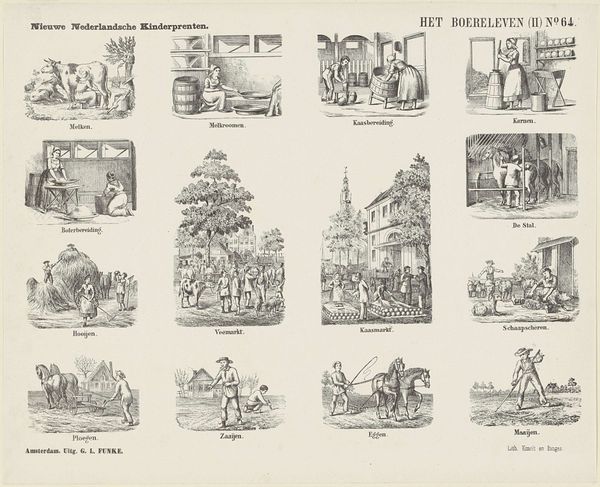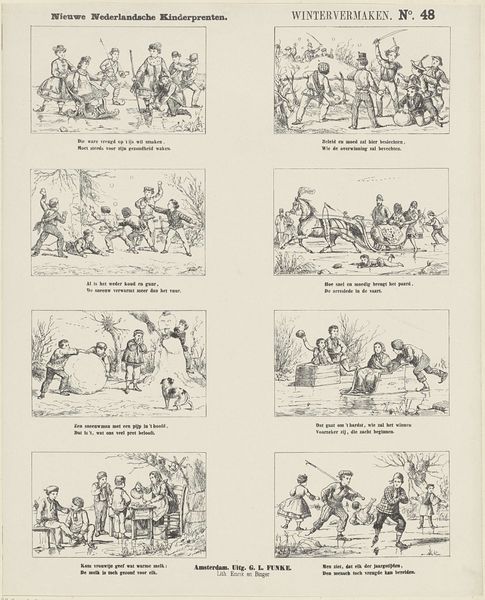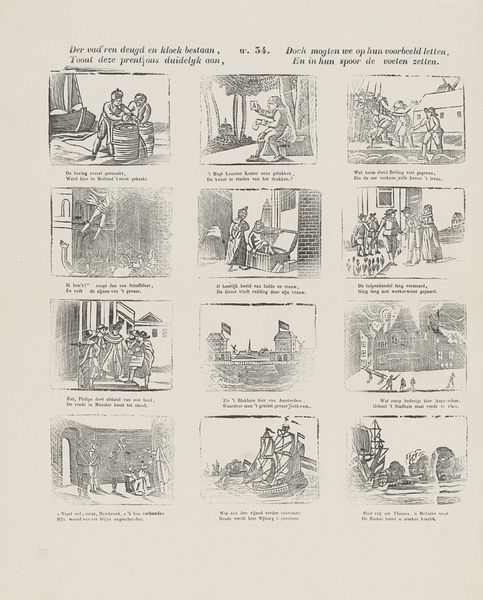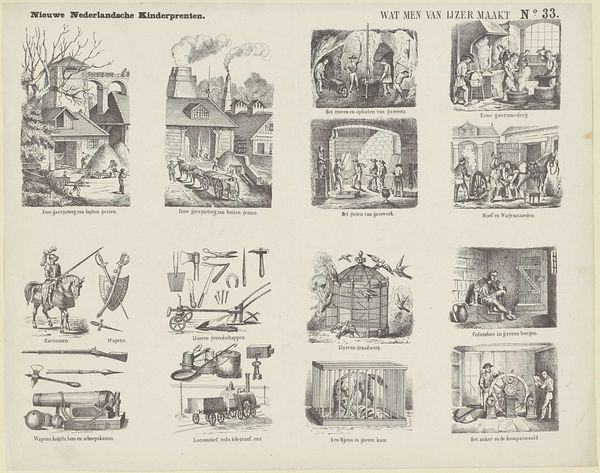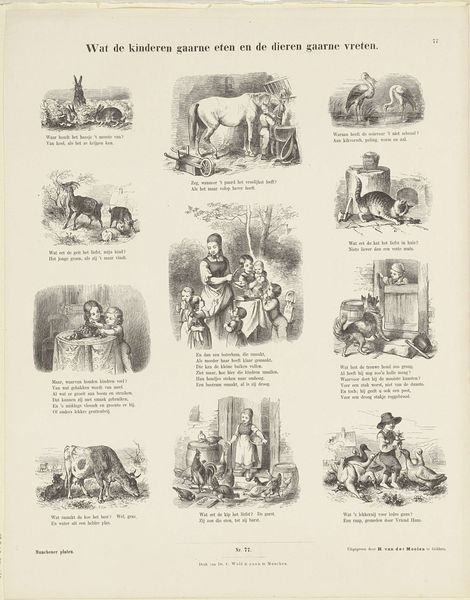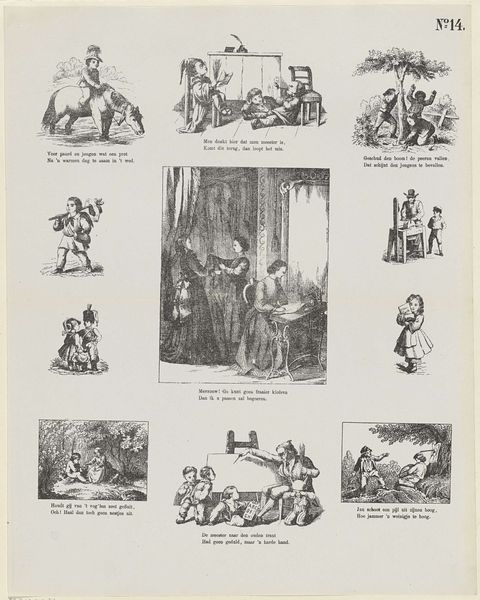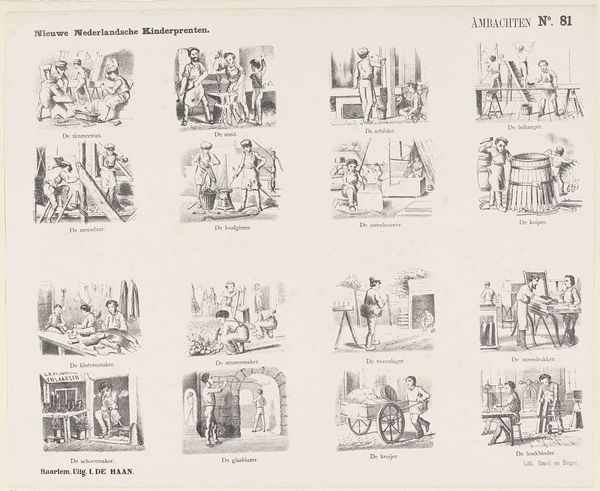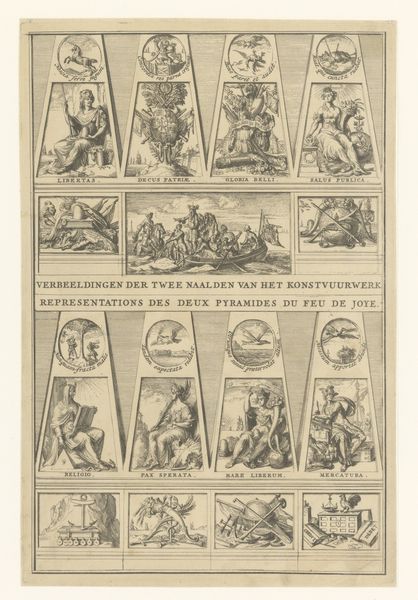
print, woodcut
#
comic strip sketch
#
quirky sketch
#
narrative-art
# print
#
sketch book
#
personal sketchbook
#
sketchwork
#
folk-art
#
pen-ink sketch
#
woodcut
#
pen work
#
sketchbook drawing
#
storyboard and sketchbook work
#
sketchbook art
Dimensions: height 341 mm, width 432 mm
Copyright: Rijks Museum: Open Domain
George Lodewijk Funke made this print called 'De Gelaarsde kat' – Puss in Boots – in the Netherlands sometime between 1836 and 1885. It's a lithograph, a printing process that allows for relatively quick and cheap reproduction. Look closely, and you'll see that the artist has used delicate lines to tell the story of Puss in Boots across twelve panels, just like a comic strip. The choice of lithography here really speaks to the purpose of the piece. It's a children’s print, so it needed to be affordable and accessible to a wide audience. The material and method also suggest something about the role of art in society. This wasn't a unique masterpiece, but rather a mass-produced item, meant for everyday enjoyment and education. The very act of printing democratizes the image, making art less of a precious commodity and more of a shared cultural experience. In the end, Funke’s print reminds us that art isn't just about individual genius, it's also about the social and economic forces that shape its creation and distribution.
Comments
No comments
Be the first to comment and join the conversation on the ultimate creative platform.
